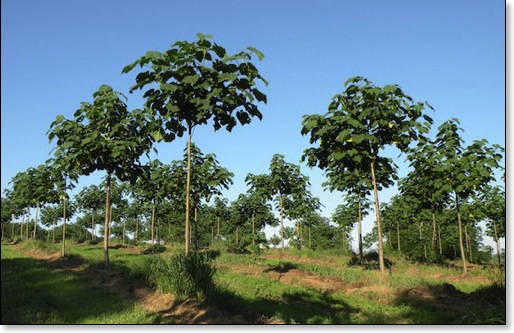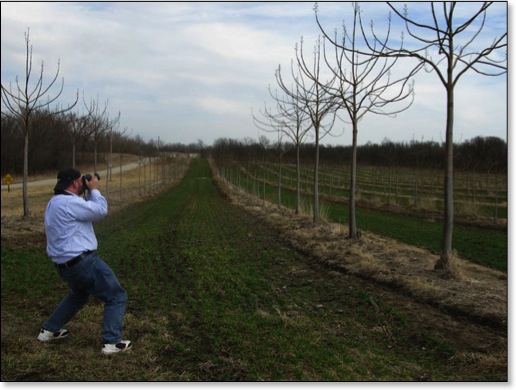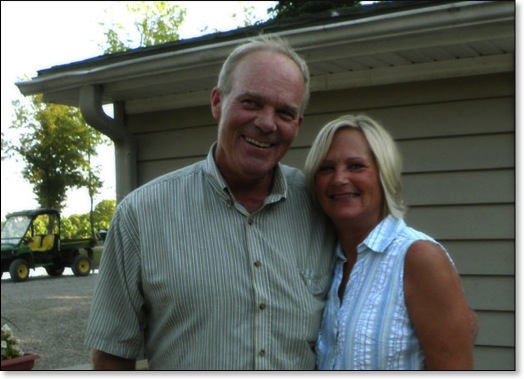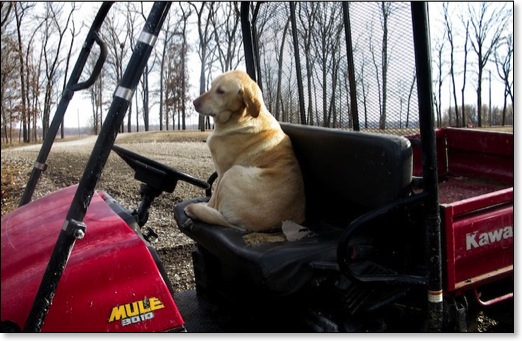Cultivating Plans
March/06/2009 Marathon
Last Wednesday to Kansas City enroute to the farm of Rex and Natalie Alewel near the town of Concordia, Missoui. I have worked with Rex, who is the owner of Marathon Press, since the early 1990s. The purpose of our meeting, which also included my teaching buddy Mark Weber, shown with me below, was to finalize plans for this year’s Strategic Marketing Plan Workshops, which Mark and I teach together. The first workshop of the year is scheduled for May 18-19 in Minneapolis. More about that workshop in an upcoming post.

When not handling Marathon business, Rex is the hands-on owner of a tree farm that surrounds his Missouri home. It is a fascinating operation: Rex farms Paulownia trees, which I had never heard of until I visited the farm last July. This amazing species originally came from China, and because it is remarkably fast-growing and produces a lightweight yet dense wood, is said to be “the new timber tree of the 21 century.” The farm comprises 11,000 trees spread over 9 different fields on 115 acres. Rex intercrops three of the larger fields rotating corn, beans, and wheat. These fields average 80 trees per acre; most of the remaining fields have 120 to 155 trees per acre with medium red clover planted between the rows, which allows him to bale clover two or three times a year.
Paulownia lumber is really beautiful: it is light straw colored, much like ash, with a very straight grain. Besides being a renewable resource, the lumber is prized by wood workers because it does not crack, warp or split, is fire resistant, and it is an excellent insulator of heat or cold. Its machinability is excellent, and it stains, glues and paints with ease.
In a year’s time a field-planted Paulownia tree can grow to between 12 and 15 feet. The field shown below, which I photographed last July had been growing for 14 months from 4-year-old stumps that had to be cut down after a heave late frost in April of 2007. Paulownia trees can start over from the stump every time you harvest for about 50 years.

Rex says that when the trees are mature and their leaves reach out to touch one another, they look like giant umbrellas that completely shelter the ground below, which creates a magical room-like environment when you walk through the field. The image I took of Mark at work photographing the leafless trees shows that the branches actually have the appearance of an umbrella-like structure. If you wish to learn more about Paulownia trees, click here and here.

The Paulownia trees seemed to me to be an apt metaphor for the work that Mark and Rex and I were doing: creating plans. Any kind of business planning is like the process of growing a crop. You have to establish it with care, then cultivate it; you can’t just leave it out there and expect it to grow into a bountiful harvest all on its own.
Here’s farmer Rex, and his wife, Natalie.

And I couldn’t conclude this post without giving you a look at Rex’s loyal dog Lucy. If he parks his four-wheel drive Mule anywhere near the house, Lucy will sit next to the driver’s seat and all day waiting for a ride. Do you see why pets are my favorite subject?


When not handling Marathon business, Rex is the hands-on owner of a tree farm that surrounds his Missouri home. It is a fascinating operation: Rex farms Paulownia trees, which I had never heard of until I visited the farm last July. This amazing species originally came from China, and because it is remarkably fast-growing and produces a lightweight yet dense wood, is said to be “the new timber tree of the 21 century.” The farm comprises 11,000 trees spread over 9 different fields on 115 acres. Rex intercrops three of the larger fields rotating corn, beans, and wheat. These fields average 80 trees per acre; most of the remaining fields have 120 to 155 trees per acre with medium red clover planted between the rows, which allows him to bale clover two or three times a year.
Paulownia lumber is really beautiful: it is light straw colored, much like ash, with a very straight grain. Besides being a renewable resource, the lumber is prized by wood workers because it does not crack, warp or split, is fire resistant, and it is an excellent insulator of heat or cold. Its machinability is excellent, and it stains, glues and paints with ease.
In a year’s time a field-planted Paulownia tree can grow to between 12 and 15 feet. The field shown below, which I photographed last July had been growing for 14 months from 4-year-old stumps that had to be cut down after a heave late frost in April of 2007. Paulownia trees can start over from the stump every time you harvest for about 50 years.

Rex says that when the trees are mature and their leaves reach out to touch one another, they look like giant umbrellas that completely shelter the ground below, which creates a magical room-like environment when you walk through the field. The image I took of Mark at work photographing the leafless trees shows that the branches actually have the appearance of an umbrella-like structure. If you wish to learn more about Paulownia trees, click here and here.

The Paulownia trees seemed to me to be an apt metaphor for the work that Mark and Rex and I were doing: creating plans. Any kind of business planning is like the process of growing a crop. You have to establish it with care, then cultivate it; you can’t just leave it out there and expect it to grow into a bountiful harvest all on its own.
Here’s farmer Rex, and his wife, Natalie.

And I couldn’t conclude this post without giving you a look at Rex’s loyal dog Lucy. If he parks his four-wheel drive Mule anywhere near the house, Lucy will sit next to the driver’s seat and all day waiting for a ride. Do you see why pets are my favorite subject?
